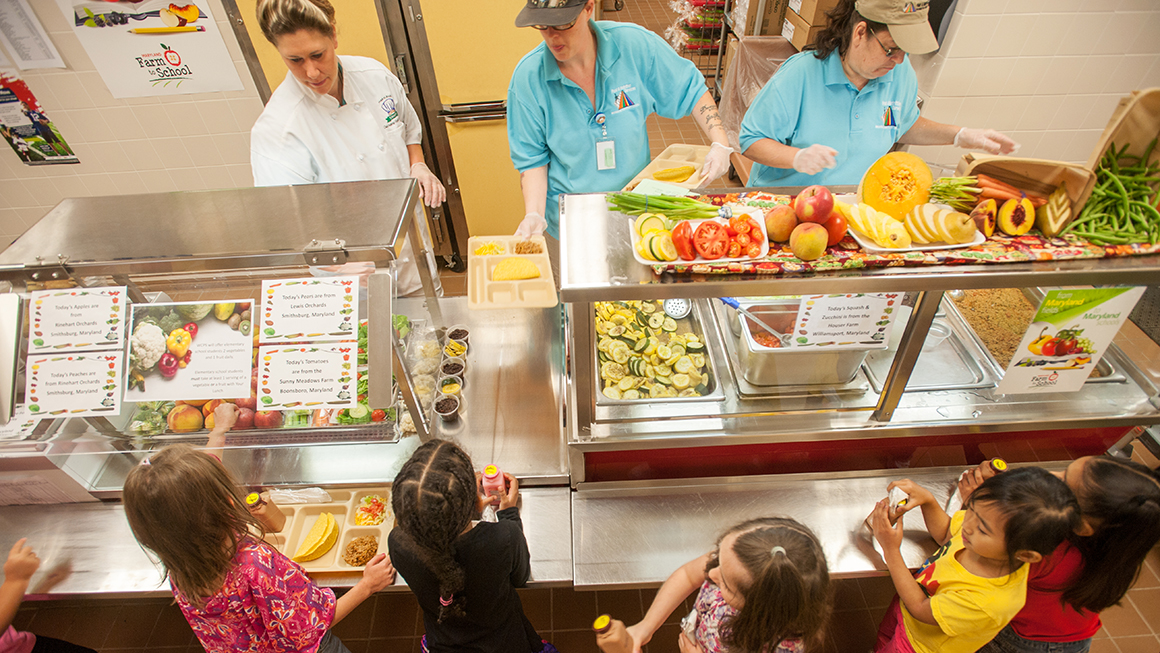
Despite food insecurity rates remaining stable for many groups and even decreasing for families with children during the COVID-19 pandemic, recent rollbacks in programs and eligibility and rapid food price inflation have put more families with children at risk of food insecurity. Families with children consistently experience higher-than-average rates of food insecurity, which can have significant developmental effects on children later in life.
In 2021, 4.6 million households with children were food insecure and struggled with consistent, dependable access to enough food for an active, healthy life. Investments in social safety net programs during the pandemic—including advanced child tax credit (CTC) payments, the Pandemic-EBT program (P-EBT), Universal School Meals (USM), and more flexibility around Supplemental Nutrition Assistance Program (SNAP) benefits—effectively decreased food insecurity rates for these families. Additional flexibility in program applications and recertifications also reduced the risk of eligible families falling off program rolls because of administrative challenges and experiencing hardship.
Now, federal and state policymakers have an opportunity to build on pandemic-era policy innovations at the White House Conference on Hunger, Nutrition, and Health. To ensure food insecurity remains low now and into the future, policymakers can expand the CTC, adjust SNAP for inflation more frequently, reinstate USM, and decrease barriers to ordering groceries online with SNAP benefits.
Rapid food inflation and rollbacks of social supports have left families with fewer resources to meet rising costs
Since the beginning of 2022, inflation has reached a 40-year high, increasing food, utility, medical, and housing costs for families. Families are facing grocery prices 13.1 percent higher than in 2021. Such rapid, sustained inflation across food and other essential goods is likely to increase families’ risk of food insecurity, as higher food prices push up local food insecurity rates.
“We’re struggling more this year because of the rise of cost of everything, more so than when the pandemic hit. The prices of gas and food is ridiculous.”
—Mother in Texas participating in a USDA meals program, summer 2022
Families with low incomes bear the brunt of inflation’s effects, as they spend most of their budget on necessities, like housing, utilities, food, and medical expenses, and have less flexibility to shift their spending in response to price changes. To cope with rising prices, families often reduce the nutritional quality of their food, choose between paying for food or other expenses, reduce their food intake, and opt for lower-cost alternatives, all of which point to deepening food insecurity. Recent data from the Health Reform Monitoring Survey in summer 2022 indicate food insecurity is on the rise for all adults, and alarmingly, a quarter of adults with young children report they were food insecure in the previous 30 days, nearly 8 percentage points higher than in 2021.
But inflation is just one factor that influences families’ budgets. Families now have fewer resources to cope with increasing prices as the advanced CTC payments and USM have expired, SNAP emergency allotments are being rolled back, and no state currently has a 2022–23 school year P-EBT plan approved. Even existing supports aren’t keeping up with families’ food costs, as the maximum SNAP benefits are at times insufficient to meet families’ needs.
Food insecurity isn’t experienced equitably either. Black households with children experience food insecurity at almost three times the rate of white families, and Hispanic/Latinx families with children didn’t see a significant decrease in food insecurity between 2020 and 2021, pointing to persistent racial and ethnic disparities in food hardship that reflect a long history of structural disinvestment in communities of color.
How can we ensure food insecurity remains low moving forward?
As inflation places sustained pressure on families’ budgets and pandemic-era policy solutions expire, policymakers can take steps to ensure families with children have the resources they need to access a sufficient, nutritious diet. The White House Conference on Hunger, Nutrition, and Health can hopefully help policymakers prioritize these steps. The Conference released its National Strategy (PDF), which includes some of the following short-term approaches to address food insecurity and its root causes:
- Expanding the child tax credit. Advanced CTC payments significantly reduced food insecurity. Ensuring the credit is permanently available to these families should be a priority.
- Adjusting SNAP benefits for inflation twice a year in periods of high inflation and continuing emergency allotments until inflation abates. SNAP benefits will be adjusted in October to account for inflation, but this change will be several months too late for families who experienced hardship all summer. Adjusting benefits twice a year in periods of high inflation can create more timely support.
- Reinstate USM. Universal access to free breakfasts and lunches is proven to reduce food insecurity and has broad support from adults nationwide.
- Decrease barriers to online ordering. Families in rural areas and those who face mobility challenges have limited access to fresh food in grocery stores. Although the expansion of the SNAP Online Purchasing Pilot allows most families to use their SNAP benefits for online grocery purchases, delivery costs pose a significant challenge. Allowing SNAP benefits to cover delivery costs can reduce this barrier to families accessing fresh food.
Ultimately, any long-term strategy to address food insecurity must tackle the root causes. Streamlining and connecting public benefit programs, increasing access to guaranteed income programs, and increasing job quality and access to education, training, and employment can start to address these issues, but the above strategies can and should be implemented in the short term to address current hardship.
Let’s build a future where everyone, everywhere has the opportunity and power to thrive
Urban is more determined than ever to partner with changemakers to unlock opportunities that give people across the country a fair shot at reaching their fullest potential. Invest in Urban to power this type of work.